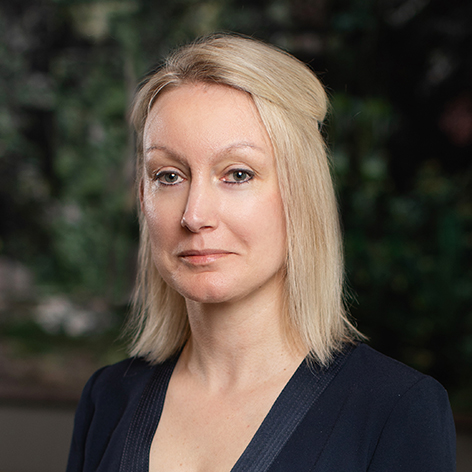Time to get digital: CMA sets out its stall as the UK's digital markets regime goes online
13 January 2025With the CMA’s digital markets powers now live, we look at how the CMA is likely to deploy them, in view of recent pronouncements and the publication of its final guidance on the functioning of the regime.
The UK’s new digital markets competition regime took effect on 1 January 2025, pursuant to the passing of enabling regulations which brought Part 1 of the Digital Markets, Competition and Consumers Act 2024 (DMCCA) into force.
The UK’s answer to the EU’s Digital Markets Act (DMA) empowers the CMA to designate firms as having “Strategic Market Status” (SMS) in relation to a particular “digital activity”. Once designated, the CMA can impose “conduct requirements” (CRs) on those firms or introduce “pro-competition interventions” (PCIs) to achieve positive outcomes for UK consumers and businesses. For more information, please see our previously-published guide to the essential elements of the regime.
Whilst the regime itself is long-trailed, and the CMA has already set out its priorities and principles for deploying its new powers, recent developments have shed additional light on how the new regulatory processes are likely to play out over the coming months and years.
CMA’s initial plans for enforcement
On 7 January 2025, the CMA issued a press release setting out its initial plans for use of its new powers, alongside a high-level “explainer” guide. In particular, the CMA announced that it expects to launch “SMS designation investigations in relation to 2 areas of digital activity in January”. No further information was provided pending detailed announcements later this month, though the CMA’s Sarah Cardell (CEO) and Will Hayter (Director, Digital Markets) have informed a parliamentary committee that the launch of these initial investigations will be sequenced in order to avoid them running to exactly the same timetable. This sequencing is designed to avoid logistical issues, both internally and for external stakeholders who may wish to participate in both investigations. The CMA then expects to launch another SMS investigation towards the end of the first half of 2025.
Guidance consultation
The DMCCA required the CMA to consult upon and publish guidance on how it will carry out its functions under the new regime. Such guidance is a typical feature of the UK competition regime and, whilst not binding, provides a useful steer as to how the CMA will exercise its statutory powers.
The CMA published its draft digital markets competition regime guidance (the Consultation Draft) in May 2024. Over 80 organisations responded to the consultation, with varying views, but one key theme was a request for more detail, including on: (i) the CMA’s procedure; (ii) how interested parties can engage in that procedure; and (iii) how the CMA will interpret certain key concepts.
Following that consultation, on 19 December 2024, the CMA published an updated guidance document (the Guidance), which expands upon the Consultation Draft in a number of areas. The Guidance is now finalised, but the CMA is likely to revise it from time to time, and has the flexibility to depart from it should it wish to do so.
Key takeaways
Strategic Market Status designations
As a starting point, only those firms designated as having SMS in respect of a digital activity (SMS firms) will be subject to the regime’s requirements. Such designations require an SMS investigation, a process which must be concluded within nine months (subject to the possibility of a three-month extension in certain circumstances) and includes both evidence-gathering and third-party consultation.
i. Identifying the digital activity
As noted above, firms must be designated as having SMS in respect of a particular digital activity. Digital activities are broadly construed and the CMA will typically look at how products are offered and consumed when seeking to delineate a particular digital activity. The Guidance makes clear that the CMA sees this as a factual exercise, without a need to define markets or assess competitive constraints.
The CMA may treat multiple activities/products as a single digital activity where they have substantially the same purpose or can be carried out in combination to fulfil a purpose. The Guidance lists some examples of when this might be appropriate, including where products are usually purchased or used in combination by customers. This could allow the CMA, for example, to group together as a single activity an operating system with certain key apps that come pre-installed with it. The CMA may consider it necessary to apply SMS designations in this way – capturing multiple activities across a digital “ecosystem” – in order to avoid an enforcement gap, should potentially harmful conduct not clearly be caused by a feature of the operating system itself1.
ii. The SMS conditions
The conditions for designating an SMS firm include criteria that are both quantitative (based on the turnover generated by the firm, in the UK or worldwide) and qualitative (namely that the firm must have “substantial and entrenched market power” and “a position of strategic significance”).
The Guidance states that, when assessing “market power” for these purposes, the CMA will not carry out a formal market definition exercise. Further, “substantial and entrenched market power” is a distinct legal concept from that of “dominance” under competition law and differs in its assessment, given it focuses on a particular “digital activity” rather than an economically defined “relevant market”.
Nevertheless, there are clear parallels. In particular, the Guidance suggests that market power will be “substantial” when the potential SMS firm does not face strong competitive constraints in respect of the activity and identifies factors that may be relevant in this regard, including: (i) the relative strength of other players; (ii) barriers to entry or expansion; and (iii) customers’ (in)ability to switch to other suppliers. It therefore remains to be seen to what extent the two concepts will diverge in practice.
The CMA may also examine whether “the potential SMS firm earns profits that are significantly and persistently in excess of normal returns, either from the digital activity directly or indirectly, for example, where the digital activity supports the potential SMS firm’s ability to earn excess profits from other activities." That it may be sufficient for a particular activity to support the firm’s ability to earn excess profits from other activities again hints at a desire on the part of the CMA to tackle self-reinforcing digital “ecosystems”, where the core product itself might not be especially profitable.
Finally, as to the requirement that the firm’s market power be “entrenched”, the CMA is required to carry out a forward-looking assessment over a period of at least five years. However, the Guidance suggests that a form of soft presumption is likely to apply in practice, in that where the CMA has found evidence of substantial market power at the time of the SMS investigation, this will "generally be supportive of a finding that market power is entrenched”, unless there is “clear and convincing evidence” that future developments (e.g. technological or regulatory) are likely to dissipate that market power.
The first set of conduct requirements may be in place before the end of 2025
One of the key elements of the new regime is the CMA’s power to impose tailored CRs on SMS firms in pursuit of the statutory objectives of “fair dealing”, “open choices”, and “trust and transparency”.
The Guidance sets out the framework for putting in place and enforcing CRs, and explains that the “CMA will typically impose an initial set of CRs as soon as practicable following (or at the same time as) an SMS designation decision” – the text in brackets having been added since the Consultation Draft. Additionally, Sarah Cardell told the aforementioned parliamentary committee that the CMA would “in parallel” consider and consult upon whether to impose CRs, alongside its initial SMS investigations.
The first CRs will therefore likely be in place before the end of 2025. However, the length of any relevant implementation periods remains uncertain, with the Guidance suggesting the CMA is keen to retain some flexibility.
There are strong indications that both mobile app stores and mobile browsers will be targeted by the first investigations, in light of the outcome of recent abuse of dominance and market investigation cases in those areas. This will enable the CMA to draw on the work it has already done (including in relation to potential remedies/commitments). However, consultations on the specifics will still need to take place and the CMA has made clear it will not “prejudge” the outcome of the SMS investigations.
The role of pro-competition interventions
The CMA’s other main tool under the new regime is PCIs. These require a separate investigation lasting up to another nine (extendable to twelve) months, which can only begin after the relevant SMS investigation has been completed. At the end of the investigation, another four to six months may be needed to issue a pro-competition order (PCO) addressing the “adverse effect on competition” (AEC) identified. This begs the question of when the CMA might choose to use them rather than CRs.
The key advantage of PCIs is that, unlike CRs – which must draw from expressly permitted types of requirements – the CMA has greater flexibility when designing PCI remedies (subject to a proportionality requirement) and these could even be structural in nature. The Guidance provides some further colour on this point, stating that PCIs may sometimes operate “in parallel” with CRs, and that “CRs could be imposed to address the harm arising from an SMS firm’s conduct in the short term while a PCI is imposed to address the adverse effect on competition, thereby addressing the underlying cause of the harm in the longer term.”
It therefore seems likely that most CMA intervention will be effected through the CRs framework, with PCIs being used to address any gaps that later emerge or any more fundamental issues, in circumstances where CRs would be able to address only the resulting adverse outcomes.
Whatever the reasons for initiating a PCI investigation, before it can impose any remedies the CMA must identify an AEC – a concept borrowed from the market investigations regime under the Enterprise Act 2002. The Guidance flags that there will, in view of their differing purposes, be divergence between the ways in which the CMA approaches making PCIs and interventions in market investigations. But at the same time, the CMA has also borrowed the concept of the “well-functioning market” from the market investigations regime, which will serve as its benchmark in PCI investigations when determining whether there is an AEC. Any areas of substantive divergence will therefore only become clear after the initial PCI investigations are conducted.
Stakeholder engagement and information gathering
The CMA has consistently indicated that the new digital markets regime will be participative and transparent, involving constructive engagement with consumer and business stakeholders, as well as with the (potential) SMS firms.
To that end, the Guidance gives ample opportunity for stakeholder engagement during the various procedures, building on the Consultation Draft in various ways. These include the addition of detailed summaries of the SMS, CRs, PCI and breach investigation procedures, specifying the stages at which both SMS firms and third parties can provide their input, and more detail on the different ways in which the CMA will engage with stakeholders, which may include surveys, calls, meetings and workshops, as well as formal consultations.
As to the CMA’s other means of information gathering, the powers under Part 1 of the DMCCA mirror those under the Competition Act 1998 (CA98) in many ways, and the Guidance largely also mirrors the CMA’s CA98 investigations guidance in this regard. Amongst other things, this means that the CMA can conduct compulsory interviews with (potential) SMS firm employees (as well as other individuals), and considers it will “generally be inappropriate” for the firm’s legal advisers to be present in such interviews (assuming the advisers represent only the firm), particularly in the context of a breach investigation. However, unlike the Consultation Draft (and the CA98 investigations guidance), the final Guidance states that the CMA will give “due consideration” to requests for the firm’s advisers to attend.
In several places the Guidance notes that the CMA may, during the course of its digital markets investigations, rely on evidence gathered and analysis carried out under its other functions. This will allow it to draw on the findings of its recent investigations into app stores and mobile browsers, as and when it opens SMS investigations into those activities. In this context, the CMA will ask the relevant firms and third parties for their views on the continuing relevance of such findings, in view of subsequent developments.
Procedural fairness
Where a complaint cannot be resolved with the CMA staff member with overall responsibility for the relevant investigation, it can be referred for determination by an internal procedural complaints adjudicator that is independent from the relevant CMA team, to ensure adequate procedural safeguards are in place.
Conclusion
Overall, the Guidance and other recent developments show that the CMA is aiming to create an agile regime which can move at pace to address harms to consumers and competition, whilst promoting transparency, with inbuilt procedures for both SMS firms and interested third parties to input into the various processes.
It now remains to be seen how the first year of the regime’s operation will play out in practice.
1 By way of contrast, under the DMA, in order to be designated, each ‘core platform service’ must meet the relevant criteria under the regulation.
Get in touch




